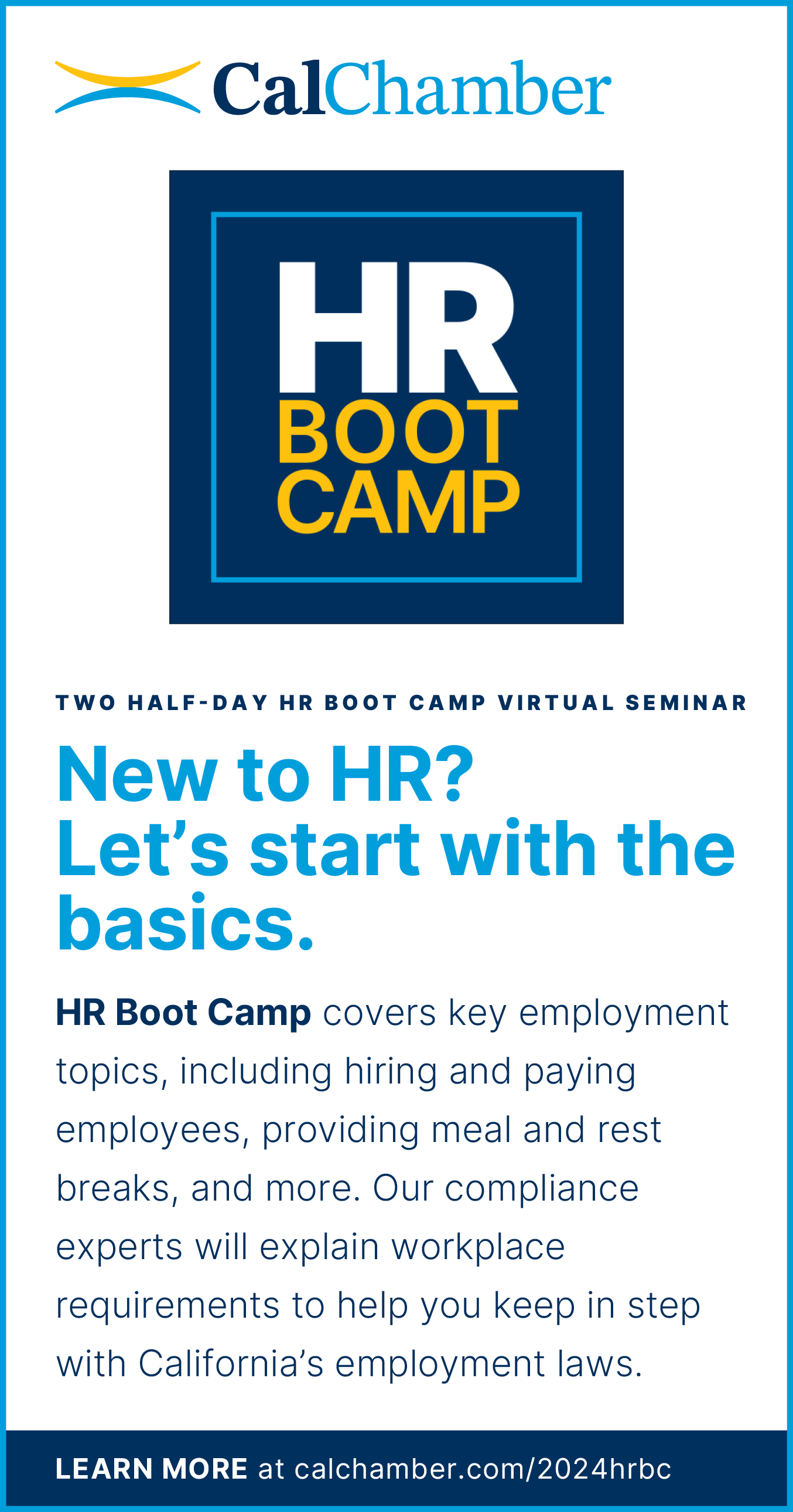A California court recently affirmed in Rodriguez v. E.M.E., Inc. that, in general, rest breaks cannot be combined.
Relying on the California Supreme Court’s guidance in Brinker Restaurant Corp. v. Superior Court, the appellate court held that “rest breaks in an eight-hour shift should fall on either side of the meal break, absent factors rendering such scheduling impracticable.” There may be unusual or exceptional circumstances that will permit variation from the norm.
In this case, whether the company can show that unusual circumstances exist to justify its practice of combining rest breaks into a single 20-minute break before the meal period cannot be decided on a motion to eliminate the case before trial (known as a motion for summary judgment).
The Rodriguez court remanded the case to a lower court so the issue can go before a jury.
Background
Under California law, employers must provide rest breaks to all nonexempt employees whose total daily work time is at least 3.5 hours.
These mandatory rest breaks must be offered at the rate of 10 “net” minutes for every four hours worked or “major fraction thereof.” The issue in this case revolved around the timing of these 10-minute breaks and whether the breaks could be combined.
The case involved employees at a metal finishing company who worked eight-hour shifts:
• Employees on the first shift (7:30 a.m. to 4 p.m.) received one combined 20-minute rest break at around 9:30 a.m. and a 30-minute meal break at 12:30 p.m.
• Employees who worked the second shift (3:30 p.m. to 11:30 p.m.) received a 30-minute meal break at 5:30 p.m. and one combined 20-minute rest break at 8 p.m.
The employees challenged the combined rest break, but the employer argued it was lawful. The lower court agreed with the employer and granted its motion for summary judgment.
The appellate court found that summary judgment for the employer was not proper and allowed the employees’ case to proceed. In doing so, the court also provided some helpful guidance on the timing of rest breaks.
General Guidance
The court relied on the Wage Orders, Division of Labor Standards Enforcement opinions and the Brinker decision to reaffirm the general rule that rest periods should fall in the middle of work periods and separated by the meal break “insofar as practicable” — which the court interpreted to mean “to the extent feasible.”
Following the Brinker guidance, the timing of such breaks in an eight-hour shift is that one rest break should fall on either side of the meal break.
Combined Breaks
The court also rejected the notion that employers are allowed to combine rest breaks, as the company in this case did. Again, the court reiterated the preferred schedule of one rest break on each side of a meal break.
A company has no right to combine rest breaks as a matter of law. However, unusual or exceptional circumstances may permit a combined rest break. The court noted that there was only one circumstance that the former Industrial Welfare Commission had discussed allowing a combined rest break: where the business requires shifts in which the meal period occurs soon after the employee reports to work. The Rodriguez court noted that those facts were not before it.
Employer Resources
Employers are advised to consult legal counsel if they think they have a situation that allows them to depart from the general rule of a rest break on each side of a meal break.
To read more about meal and rest breaks, visit the California Chamber of Commerce HR Library at hrcalifornia.com.




